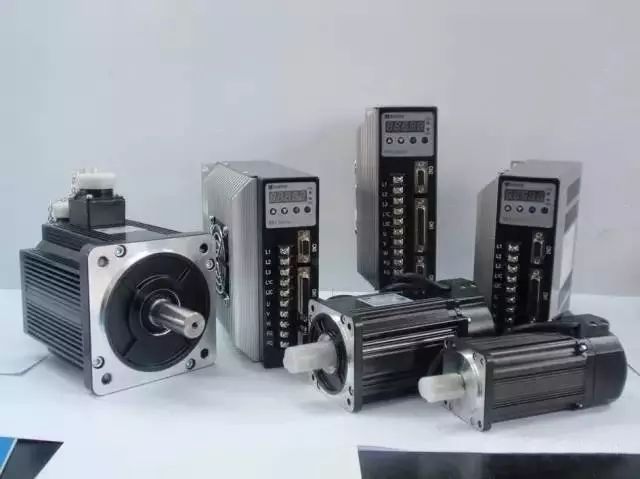The servo system consists of a servo drive and a servo motor. The drive utilizes precise feedback mechanisms combined with a high-speed digital signal processor (DSP) to control the IGBT, enabling accurate current output. This allows the three-phase permanent magnet synchronous AC servo motor to achieve highly accurate speed control and positioning. Compared to standard motors, AC servo drives are equipped with multiple built-in protection features, and since the motor does not have brushes or commutators, they offer higher reliability and require less maintenance.
To ensure the long-term performance of the servo system, several key factors should be considered during operation. Environmental conditions such as temperature, humidity, dust, vibration, and input voltage must be carefully monitored. It is also important to regularly clean the cooling and ventilation systems of the CNC unit. Make sure that the cooling fans on the CNC are functioning properly. Depending on the workshop environment, cleaning should be performed every six months or quarterly to maintain optimal performance.
When a CNC machine is left idle for an extended period, regular maintenance of the CNC system is essential. One effective method is to frequently power on the system and let it run at no load while the machine is locked. During periods of high humidity, such as in the rainy season, it's recommended to power the system daily. The internal heat generated by the electrical components helps to remove moisture from the CNC cabinet, ensuring stable and reliable operation of the electronic parts. Experience has shown that machines that are not used regularly often face various issues when restarted after rainy days.
Due to the varying working environments of end users and the limitations of technical support at the frontline, many electromechanical systems fail to receive proper management. As a result, the lifespan of mechatronic equipment can be shortened, and their performance may degrade due to failures, leading to economic losses.

Servo drives are controllers designed to manage servo motors. Their function is similar to that of inverters used with standard AC motors. Servo drives are a key component of the servo system and are primarily used in high-precision positioning applications. Typically, servo motors are controlled through three modes—position, speed, and torque—to achieve accurate motion control. These devices represent advanced technology in motion control. So, how do you test and repair a servo drive? Here are some common methods:
1. When using an oscilloscope to check the current monitoring output of the driver, only noise is observed and no readable signal is found.
Cause: The current monitoring output is not isolated from the AC power supply.
Solution: Use a DC voltmeter to observe the signal.
2. The motor runs faster in one direction than the other.
Cause: The phase of the brushless motor is incorrect.
Solution: Check and adjust the correct phase.
Cause: The test/bias switch is set to the test position when not in use.
Solution: Move the test/bias switch to the bias position.
Cause: The position of the deviation potentiometer is incorrect.
Solution: Reset the potentiometer to its correct position.
3. Motor stalls.
Cause: The polarity of the speed feedback is wrong.
Solution:
a. If available, switch the position feedback polarity.
b. If using a tachometer, connect TACH+ and TACH- to the drive.
c. If using an encoder, connect ENC A and ENC B to the drive.
d. If using HALL mode, reverse HALL-1 and HALL-3, then connect Motor-A and Motor-B accordingly.
Cause: Encoder power supply is lost.
Solution: Check the 5V encoder power supply and ensure it provides sufficient current. If an external power source is used, verify that the voltage is properly signaled to the drive.
4. LED is green, but the motor doesn’t move.
Cause: The motor is prohibited from operating in one or more directions.
Solution: Check the +INHIBIT and –INHIBIT ports.
Cause: The command signal is not reaching the driver.
Solution: Connect the command signal ground to the driver signal ground.
5. After powering on, the LED is not lit.
Cause: The supply voltage is too low, below the minimum required level.
Solution: Check and increase the supply voltage.
6. When the motor rotates, the LED flashes.
Cause: HALL phase error.
Solution: Check the motor phase setting switch (60 / 120). Most brushless motors operate at 120-degree phase shifts.
Cause: HALL sensor failure.
Solution: Measure the voltage of Hall A, Hall B, and Hall C while the motor is running. The voltage should range between 0 and 5 VDC.
7. LED remains red continuously.
Cause: A fault has occurred.
Solution: Possible causes include overvoltage, undervoltage, short circuit, overheating, drive disable, or invalid HALL signals.
Neoprene Zipper Cable Sleeve,Neoprene Cable Management Sleeve,Zipper Sleeve Cable Wrap,Neoprene Wire Sleeve
Shenzhen Huiyunhai Tech.Co., Ltd. , https://www.cablesleevefactory.com